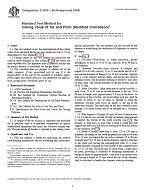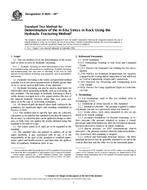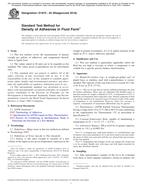1.1 These test methods cover the accelerated aging and monitoring of the time-dependent performance of electrochromic windows. Cross sections of typical electrochromic windows are shown in which devices have four or five-layers of coatings that include the two or three active layers sandwiched between transparent conducting electrodes (TCEs, see Section ).
1.2 The test methods are applicable only for multilayered (two or more coatings between the TCEs) absorptive electrochromic coatings on sealed insulating glass (IG) units fabricated for vision glass (superstrate and substrate) areas for use in buildings, such as sliding doors, windows, skylights, and exterior wall systems. The multilayers used for electrochromically changing the optical properties may be inorganic or organic materials between the superstrate and substrate.
1.3 The electrochromic coatings used in this test method are exposed to solar radiation and are deployed to control the amount of radiation by absorption and reflection and thus, limit the solar heat gain and amount of solar radiation that is transmitted into the building.
1.4 The test methods are not applicable to other chromogenic devices, such as, photochromic and thermochromic devices.
1.5 The test methods are not applicable to electrochromic devices consisting of three layers of coatings including the two transparent conducting electrodes (see Section 3).
1.6 The test methods are not applicable to electrochromic windows that are constructed from superstrate or substrate materials other than glass.
1.7 The test methods referenced herein are laboratory tests conducted under specified conditions. These tests are intended to simulate and, in some cases, to also accelerate actual in-service use of the electrochromic windows. Results from these tests cannot be used to predict the performance with time of in-service units unless actual corresponding in-service tests have been conducted and appropriate analyses have been conducted to show how performance can be predicted from the accelerated aging tests.
1.8 The values stated in SI units are to be regarded as the standard.
This standard does not purport to address all of the safety concerns, if any, associated with its use. It is the responsibility of the user of this standard to establish appropriate safety and health practices and determine the applicability of regulatory limitations prior to use.
Product Details
- Published:
- 05/15/2006
- Number of Pages:
- 13
- File Size:
- 1 file , 690 KB
- Redline File Size:
- 2 files , 1.3 MB


